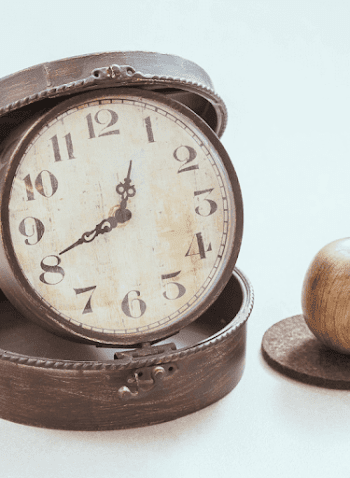This post is the second part of "How do I know a genealogy source is correct?" The previous post explained why that's not a question you can answer and why you don't even need to ask it.
This post is about the questions you SHOULD ask. We'll look at...
- Four questions you should ask every time you find a genealogy record.
- Why each question is important.
- What kind of information you should be recording as you research (hint: it's not just names, dates, and places).
Evidence Analysis Questions
Here are the fundamentals for evidence evaluation. Remember, this is just an introduction to this concept. Make sure to learn more once you master the fundamentals.
Ask yourself:
- What question am I trying to find the answer to?
- Are there any obvious problems? (remember the shipping box analogy from the previous post)
- Who provided the information & how did they know the information?
- Who created the source you're using & how does this affect the information the source provides?
I'll go into each of these briefly to get you started.
- What question am I trying to find the answer to?
Remember, you have to know what question you're trying to answer to evaluate the evidence. Who cares how well-packed a box is if it doesn't contain what you ordered. Knowing what question you are trying to answer is how you can evaluate evidence (it's not evidence if it doesn't relate to your question).
Another important aspect is realizing you will have to reevaluate a source for a different question. You will have to reevaluate information if you use it for a different question. The "question" is what helps you determine if information is evidence and if or how you should use it. Without knowing the question, you basically have a sealed shipping box, and it doesn't matter what's in it or even if you open it.
You need to know what question you are trying to answer and when the question changes, you will reevaluate.
- Do you see any obvious problems?
Evidence evaluation always involves common sense. Asking if you see obvious problems is using common sense. We could ask more questions for evidence evaluation, but they can be overwhelming when you're getting started. If you see potential issues or actual problems with a source or information, you need to make note of it. This item is included so you don't solely answer the other questions and skip anything else that pops into your mind.
- Who provided the information/how did they know the information?
A primary consideration in evidence evaluation is who provided the information and how they knew it. Often we can't determine this. You should still think about who possibly provided the information and how likely they would have known the information they provided.
I often hear genealogists ask if they should use a family or local history from the 19th century because it doesn't list any sources. You shouldn't skip using a source. You should evaluate it, and for local and family histories, this question is key.
Who provided the information for the unsourced local or family history? The author probably did not provide all of it; he may have only compiled it. First, you don't have to have formal cited sources to know the source of information. Remember, we care about evidence, not "sources," so some evidence may have a source when other evidence doesn't.
Histories may state where some information comes from. Sometimes they say a resident provided information. They may say a letter was provided by a family member. You have to read the text, more than just the "facts" you are trying to grab, to find these gems. Then you are allowed to use your genealogical imagination.
You don't want to go crazy with potential "who provided this source" options but try to imagine who could have provided the information. Do you think someone just made it up? Remember, use common sense.
When was the book published? Only someone old enough, but alive, could have provided information (often if a letter or family manuscript from a deceased person is used, it will be mentioned, even if there are few details provided. Our ancestors liked to know information about 200 years earlier came from someone who lived then or knew the people mentioned).
Look for clues to who provided the information. Sketches in local histories are usually written by the person the sketch is about or possibly their child. A random person doesn't care about writing about a neighbor or a distant cousin. Even if a distant cousin compiles a family history, they have to gather the information from people who know the information ("research" was much harder in the past, especially before the availability of photocopying).
Evaluating 19th-century histories is great practice. They often contain tons of clues you can use for evidence evaluation and "imagining" who provided the information.
Let's flip this question to a census record.
Usually, we don't know who provided the information. This is where your genealogical imagination needs to combine common sense with knowledge of how records get created.
For the family or local history, if someone in the family couldn't provide information, the information just wasn't included in the history.
The census was supposed to include every household. Yes, sometimes people were missed (or intentionally avoided being included), but the enumerator tried to include everyone in his district. That means he'd try and get the information from anyone he could, if necessary.
The history would have excluded the information if the family wasn't available, but an enumerator would ask one of the children, a neighbor, anyone passing that would provide information. It makes it very hard to know how the person providing the information knew the information.
The "evaluation" of information like this, where it's very questionable how the informant knew the information, leads to knowing you need to do more to verify the information you find (you still don't want to toss a source, census information that is wrong sometimes becomes a clue.)
As one last example, what about a marriage return (especially pre-20th century records)?
Once again, you need to combine genealogical imagination with how records are created. Was the record you're looking at present at the marriage? In some times and places, it was. The records I mainly use for marriages most likely were not.
For a civil marriage return, the return you use almost surely is a copy unless the marriage was performed by a civil officiant that worked in the office where the records were kept (this will once again vary by time and place).
For my research, which is mainly 19th century southeast U.S., people were often married by a minister (the clerk's copy wasn't present) or a Justice of the Peace. It is possible the J.P. married them at the courthouse and filled in the clerk's return then and there. Or they were married at the bride's home, or the J.P.'s home, or the cousin's house, some neighbor's house, etc.
Some marriage returns are very specific and tell you this, but many aren't. In my research, the information was provided by the officiant that performed the marriage. Hopefully, he wrote the details down when he performed the marriage and brought it to the clerk to be recorded.
Sometimes you can tell an officiant came in and reported a whole bunch of marriages after the fact. There are multiple entries in a row where they are all performed by one person, and the dates are out of order from the other marriages recorded. You'll have to decide how or if this affects your research and the specific question you're trying to answer.
- Who created the source you're using/how does this affect the information the source provides?
Let's look at the marriage return example again. This can be hard to properly explain without an example.
The officiant likely provided the information. Then the court clerk (or whoever's job it was) created the actual return. But is that the source you're using? In part.
Are you using an abstracted book of marriage records? The abstractor created the book you're using. They could have copied information wrong. The clerk created the original, and he could have also copied information wrong if he was not the actual informant. Those are potential places for error. You have to decide if the information you're finding seems to be affected by these possible issues.
What if you're using a digital image or microfilm of the book of returns (created by the clerk)? In essence, you are using the original. However, use common sense. Is there something wrong with the image you're looking at? Is it blurry? Is part of the page cut off? These are factors that may affect the information.
I haven't listed the next point separately because hopefully, this came up under "do you see any obvious problems." The microfilm (and therefore the digital image made from it) may be hard to read because the records were old.
Microfilm was black and white, so information might be blacked out around the edges where the paper darkened over time. Don't forget that digital images online usually have a place to adjust the brightness, and you may be able to read the text in these dark areas. Microfilm readers also have this option, but it doesn't work as well, and sometimes you can't print a legible copy even if you can read something on a screen.
You should note if you're having trouble reading information because of any type of damage to the record. This is part of evidence evaluation.
If you'd like to learn more, check out the Source Evaluation Workbook.
This workbook takes the evaluation criteria explained in this post and further breaks everything down, making it easier to remember and use. You'll also get printable worksheets to help you practice and a one-page printable "cheat sheet" that lists all the criteria, so you have them handy every time you research.
Bringing it together
The more people and time between you and the information, the more chance for issues. Evidence evaluation is all about judging how this affects the evidence you find, starting by knowing what is evidence (what is your question, information that is relevant is evidence).
Remember to use common sense and remember this is "evaluation." It isn't "evidence calculation." The process is not perfect. You won't always know things about a source that you want to know. You judge how likely it is that information is affected by a potential issue, not calculating the correctness based on issues you're sure occurred.
Getting good at evidence evaluation takes practice, lots of practice. You should be evaluating potential sources from the moment you think of them. Don't avoid using a source because it's not the best, but don't just take every piece of information at face value, either.
If you want more help learning the questions to ask yourself, plus some worksheets to help you practice source evaluation, check out the newest item in The Brick Wall Solution line, the Source Evaluation Workbook.










